Samarqand, Uzbekistan – July 2014
Samarqand, Mirror of the World, the Garden of the Soul, the Jewel of Islam, the Pearl of the East, the Center of the Universe. Lying in the river valley of the Zerafshan, and flanked by spurs of the Pamir-Alai mountains, this fabled oasis at the fringes of the Kyzyl Kum desert has never failed to leave its admirers in awe. Samarqand (Samarkand) has survived the full sweep of Central Asia’s history. Up to 40,000 years ago Paleolithic man wandered through the area. The city proper ranks in age with Rome and Babylon. Six arteries of the trade routes west to Persia, east to China and south to India met here to form a major Silk Road crossroad.
The Registan of Samarqand
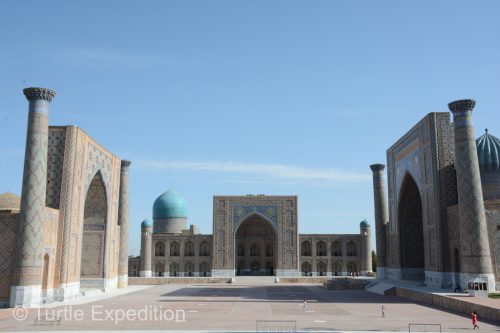
The Registan complex is at the heart of Samarqand. It is considered the greatest and most magnificent in the Central Asian Islamic world. These Madrassahs were like universities for advanced education and religion.
Heading north out of Bukhara on M 37, we wanted to reach the town of Ghijduyan, home for the sixth generation of potters from the Narzullayevs family, world famous for their beautiful hand-painted ceramics. We were able to watch an artist as he created a shapely vase. Even with the difficulty of transporting such treasures back to California we took a chance and couldn’t resist buying at least one piece.
The roads were good and we were able to continue all the way to Samarqand. Following the Silk Road as we were, we had to stop at the remnants of an old caravansary near the village of Lavish. Not much was left of it except the foundations with the grand entry portal where long caravans of treasure-laden camels once plodded through. Little else had withstood the test of time.
Finding the Hotel Abdu Babudir 2 we had previously researched in Samarqand was a challenge without a detailed map of the city. The easy way in such cases is simply to hire a taxi and have him lead you to the address. Our room was not fancy by any stretch of the imagination, but the AC worked and we lounged in the cool air. It was a well-known stopover for overland travelers so it was a great time to exchange ideas and travel tips.
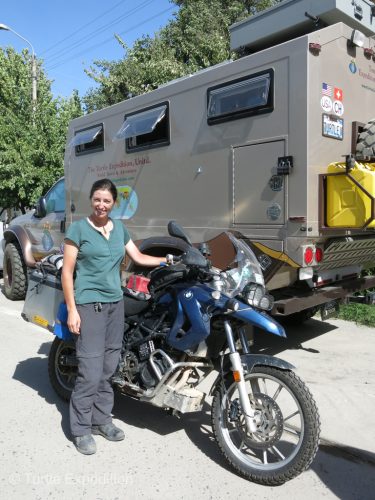
Beth from Auburn, California, near our home town was traveling all the way to Vladivostok on an obviously well set-up BMW.
Each morning as the first rays of sunshine melted over the arches and exploded off the multicolored mosaics surrounding us, we would wander through some of the most amazing architecture in the world. What was truly more astonishing is that most of the temples, minarets, mausoleums and madrassahs, (schools of science and religion), had been destroyed, sacked, burned to the ground and rebuilt numerous times by different rulers. In 329 BC, 2,346 years ago, Alexander the Great conquered the city. A succession of Persian and Turkic peoples ruled until 1220 when Genghis Khan stormed in. In 1370 Tamerlane, (Taurid Transoxiana), made Samarqand his Imperial Capital, a city beyond compare. During his
35-year trail of campaigning, an estimated 17 million people died in a path of blood marked by pyramids of skulls throughout Persia, Syria, Asia Minor and Russia. The plunder of his conquests funded his dream and the architects, masons, painters, calligraphers, tile-glaziers and glass blowers he brought back created the fluted domes and sky-blue mosaics that excite travelers even today. After falling into despair for a few hundred years, many of the buildings have been restored and others are undergoing restoration. When you look at the pictures below we have made our best effort to show you the amazing details. These are not simply painted designs. What you are seeing is hundreds of thousands of individually glazed pieces of ceramic and glass placed one by one to create the image. One cannot even imagine the human effort it required to engineer these massive works of art.
- Highway M37 out of Bukhara was in good condition. Traffic was normal.
- Where there is water, the desert can come to life.
- We were able to watch an artist in the home and studio of the Narzullayev family as he created a shapely vase.
- Using a traditional potter’s wheel, of course it was foot powered!
- Limited batches of work were fired in small brick ovens.
- The selection of beautiful hand-painted bowels, platters and vases was tempting, even knowing how fragile they were for travel over the rough roads ahead.
- We could not resist buying a sample of the art.
- Following the Silk Road as we were, we had to stop at the remnants of an old caravansary near the village of Lavish. Not much was left of it except the foundations.
- The stonework on the entry portal indicated that this must have been an important stop between Bukhara and Samarqand.
- Our room at the Hotel Abdu Babudir 2 guesthouse was not fancy, but the air conditioning gave us an escape from the heat.
- Beth from Auburn, California, near our home town was traveling all the way to Vladivostok on an obviously well set-up BMW.
- A nicely prepared Land Rover was home on the road for this French couple traveling along the Silk Road.
- The Registan complex is at the heart of Samarqand. It is considered the greatest and most magnificent in the Central Asian Islamic world. These Madrassahs were like universities for advanced education and religion.
- The Ulg Beg Madrassah was a school or university teaching advanced mathematics, science and religion. Flanked by high minarets, it was a stunning example of Islam architecture.
- We could only imagine the scaffolding and ropes where artists were hanging or clinging to the sides of these minarets to place each little piece of glazed tile into a predetermined pattern.
- The tiger mosaics on the face of Sher-Door Madrassah flout the ban in Islam of the depiction of living beings on religious buildings. Zoom in to see the amazing detail of these masterpieces.
- The turquoise dome above the Bibi Khanum Mosque is one of the most important monuments of Samarkand. Built between 1398 and 1404, restoration was not completed until 1999.
- These photos taken by Daniel C. Waugh in 1969 and 1979 give us an idea of the amazing work that has been done to restore these historic buildings.
- The Ulug Beg and Tillie-Kari Madrassahs housed hundreds of students under the tutelage of the finest scholars of the age. Islamic and secular sciences were taught.
- The massive domes and interior classrooms of these Madrassahs were ornately decorated with spectacular inlaid mosaics.
- The fluted Bibi Khanum Mosque shows yet another level of the amazing artists and architects who worked in Samarqand.
- The cupola over the Bibi-Khanym Mosque was one of the largest and most magnificent mosques in the Islamic world. By the mid-20th century only a grandiose ruin of it still survived, but now major parts of the mosque are being restored.



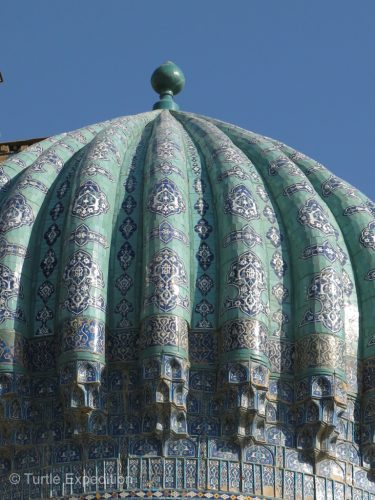
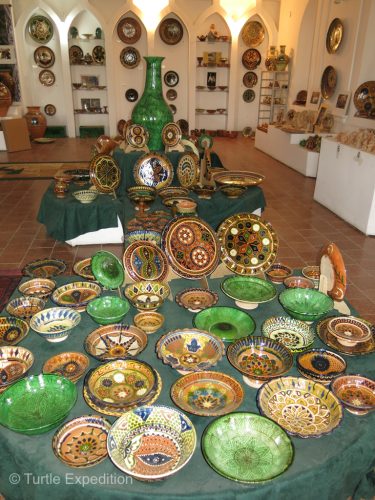


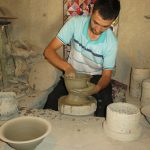
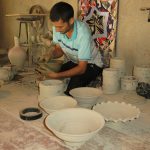
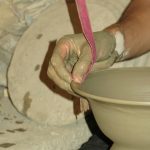
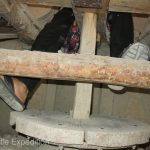
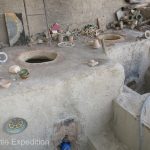
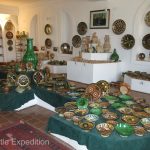
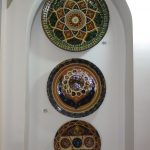
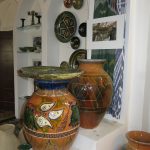
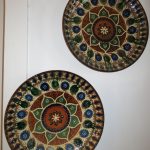
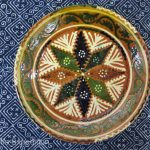
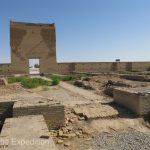
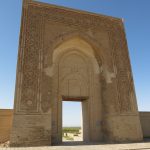
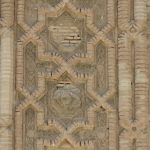

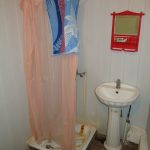


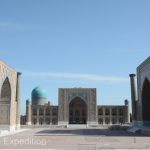
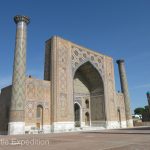
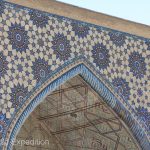
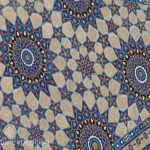
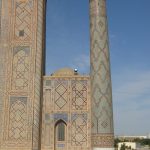
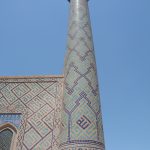
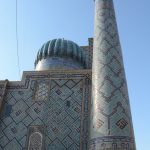
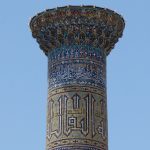
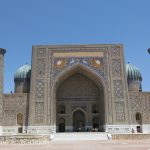
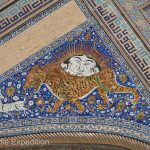
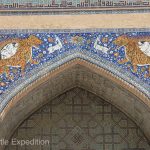
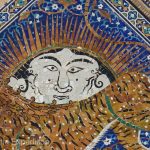
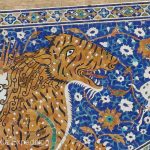
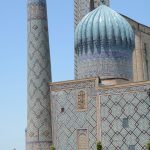
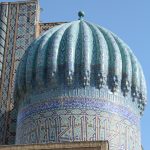
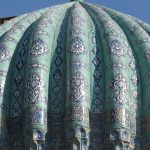
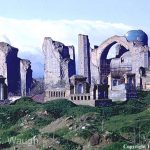
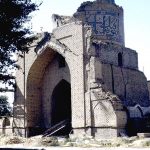
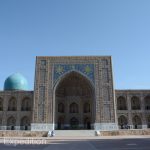
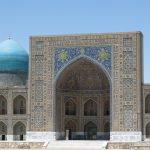
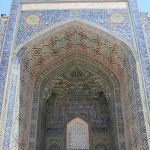
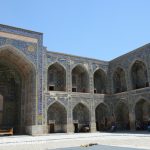
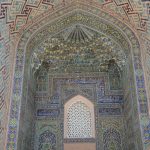
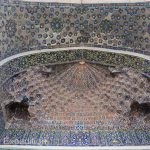
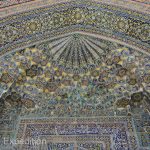
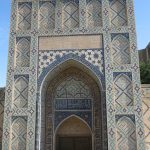
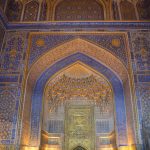
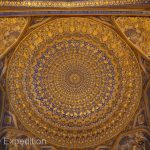
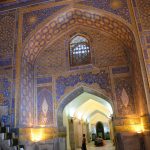
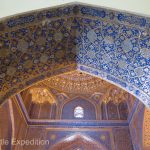
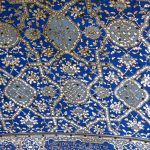
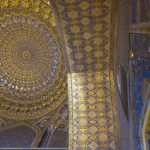
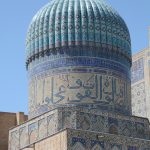
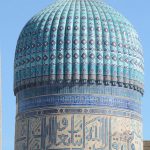
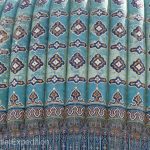
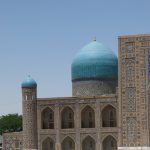
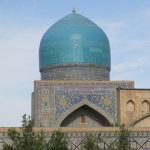
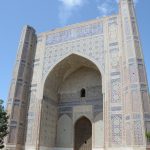
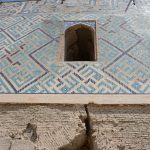
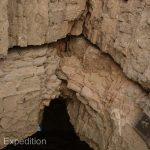





Leave a Comment